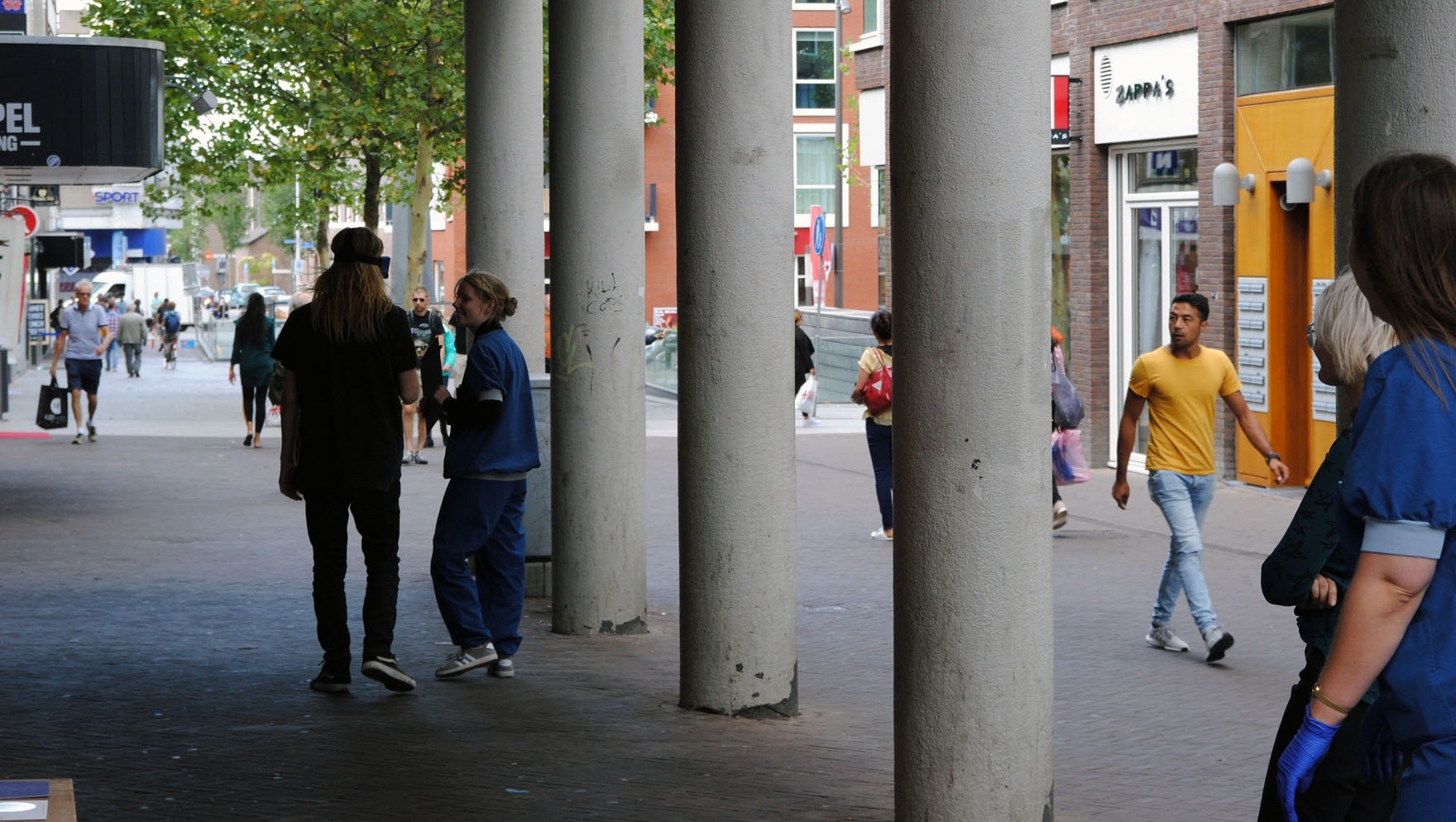In 1960 waagde de Franse kunstenaar Yves Klein (1928-1962) een sprong in het luchtledige. Zijn werk Le Saut dans le Vide (een sprong in de leegte) is een vroeg voorbeeld van analoge fotomontage. Hij omarmt de vrijheid van de leegte en lijkt op het punt te staan weg te vliegen ofwel neer te kunnen storten. De kans op falen weerhoudt ons vaak een risico te nemen. Maar zonder risico, geen groei.
Als je in een veilige, gecontroleerde omgeving, stap voor stap kan oefenen om te gaan met het gevoel en de gedachte ‘niet te weten wat er komen zal’, zal je dan vaker kiezen voor het onbekende?
Isabelle Bisseling deed cultuurhistorisch en (neuro)biologisch onderzoek naar de kleur blauw en ontdekte dat ons oog anders op de kleur blauw reageert dan op andere kleuren.[1]Waarneming van de kleur blauw uit zich in een ervaring die niet alleen rustgevend is voor ons oog en brein, maar tevens actief aanzet tot contemplatie en verbeelding.
Daarbij wordt de kleur blauw door de mens al eeuwenlang verbonden aan het immateriële, het ongrijpbare, alles dat niet te bevatten is. Ook culturele theoriën van o.a. Yves Klein, Johann Wolfgang von Goethe (1749-1832), Wassily Kandinsky (1866‐1944) en James Turrell (1943), beamen deze associatie met de kleur blauw. Het blauw is volkomen leeg: alles is er mogelijk.
Isabelle Bisseling beoogt de resultaten van haar wetenschappelijke onderzoek in te zetten in een Mixed-Reality Experience, en zo een context te creëren waar bezoekers hun grenzen kunnen verleggen met behulp van de kleur blauw. ‘Ik hoop mensen te kunnen verleiden om vaker het onbekende te verkiezen boven het vertrouwde’.
Perhaps it isn't always easy to choose new and innovative. New is unknown and uncertain, a leap into the unknown. Still, is that a reason to continue with what we're used to? If we want to progress, we have to take steps forward. With the Mixed-Reality Experience developed by Drs. Isabelle Bisseling (1987) this becomes a literal possibility.
In 1960, French Artist Yves Klein (1928-1962) leaped into the unknown. His work 'Le Saut dans le vide' (a leap into emptiness) is an early example of analog photomontage. He embraces the freedom of the void and appears to balance on a point between lifting off and crashing down. The chance of failure often keeps us from taking chances. But without risk, there can't be growth.
If you could practice encountering the feeling of not knowing what's to come in a safe environment, would you be more open to choosing the unknown in the future?
Isabelle Bisseling conducted cultural and neurobiological research into the colour blue, discovering that our eye responds differently to this colour compared to others. Observing the colour blue puts both our eyes and mind at ease. Furthermore, it stimulates contemplation and imagination.
Blue has long been connected with the immaterial, the intangible, and the incomprehensible. Cultural theories posed by Yves Klein, Johann Wolfgang von Goethe (1749-1832), Wassily Kandinsky (1866‐1944) and James Turrell (1943) amongst others, confirm this association. Blue is an open emptiness where anything is possible.
Isabelle Bisseling wants to translate her scientific research into a 'mixed-reality experience', By doing so, she hopes to create a context where visitors can expand their boundaries by using the colour blue. "I hope I can seduce people to choose the unknown over the familiar more often'.
[1]Isabelle Bisseling, ‘Blauw Bekeken: de natuurlijke perceptie van de kleur blauw in culturele uitingen’, Desipientia: Kunsthistorisch Tijdschrift (2016), 2: Het Ruime Sop, 39-42. (ISSN: 1386-1069)





















